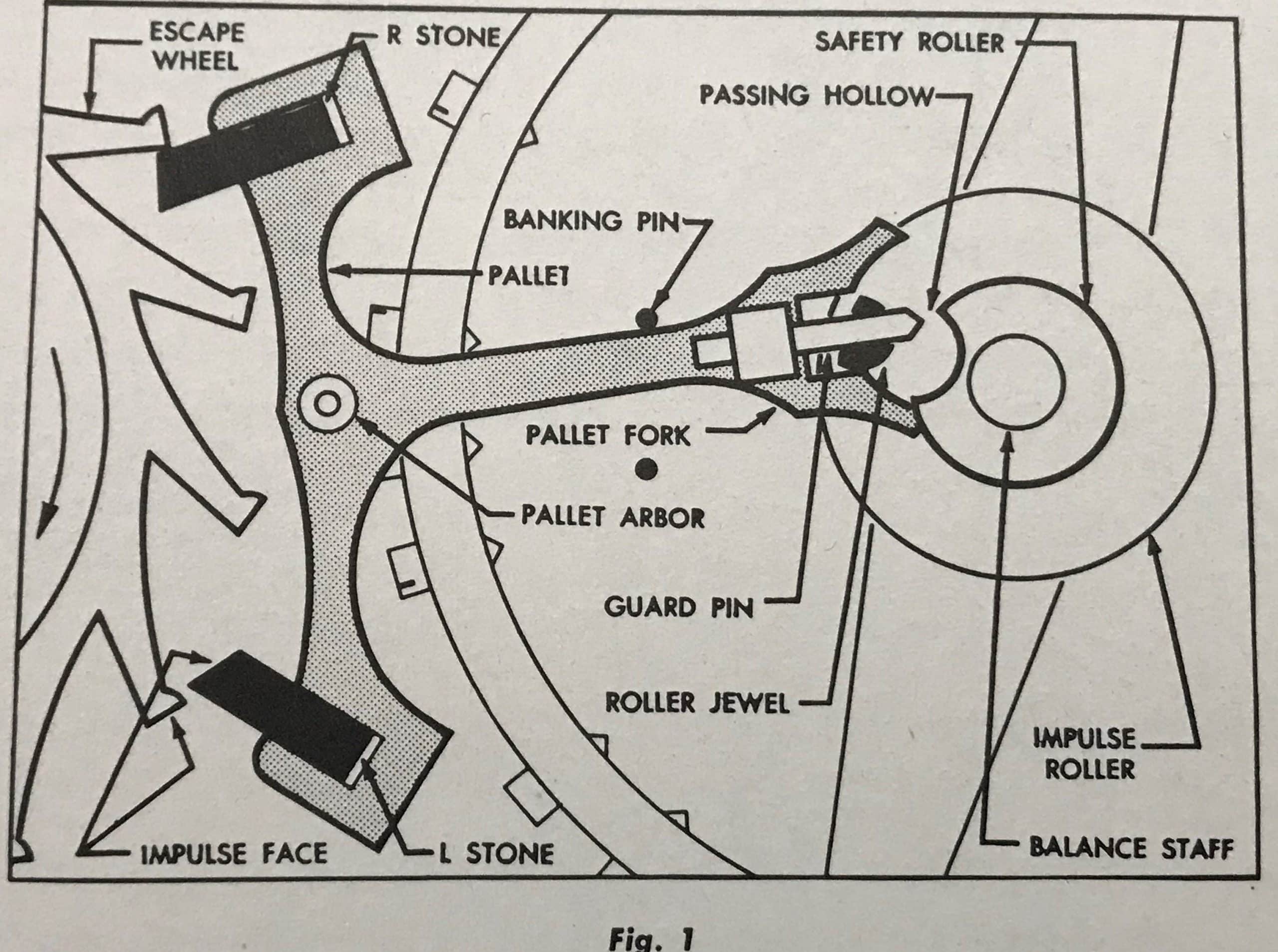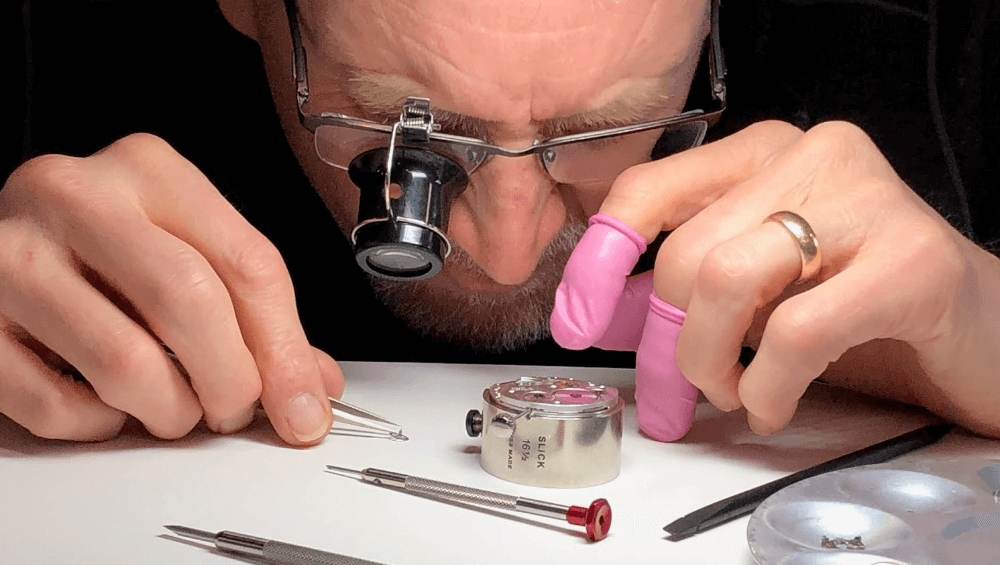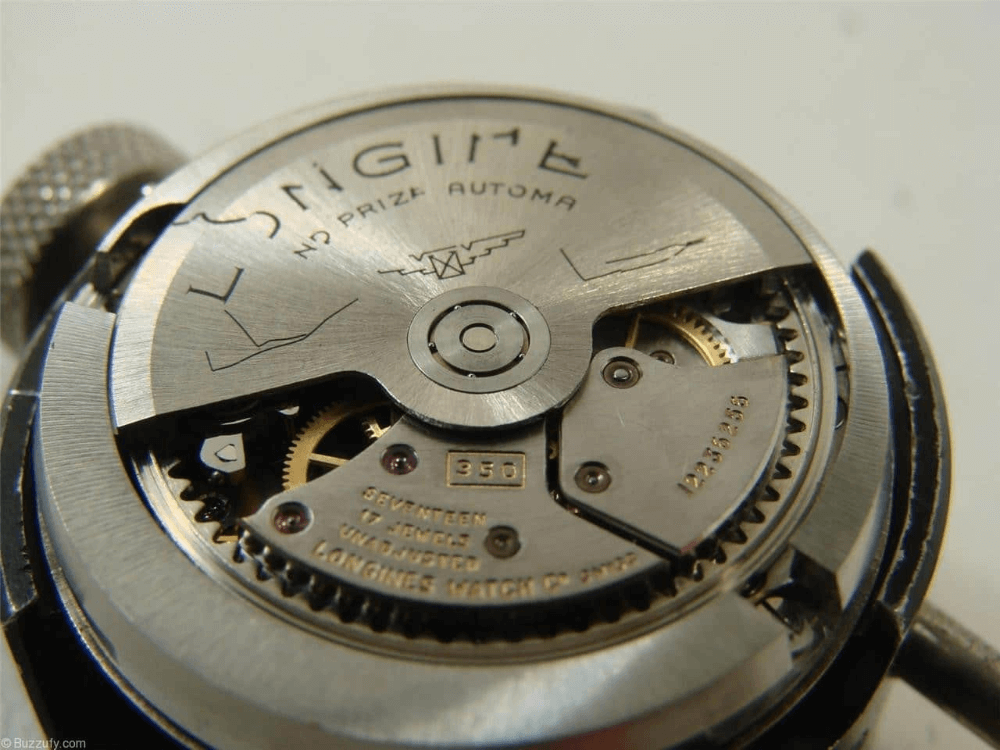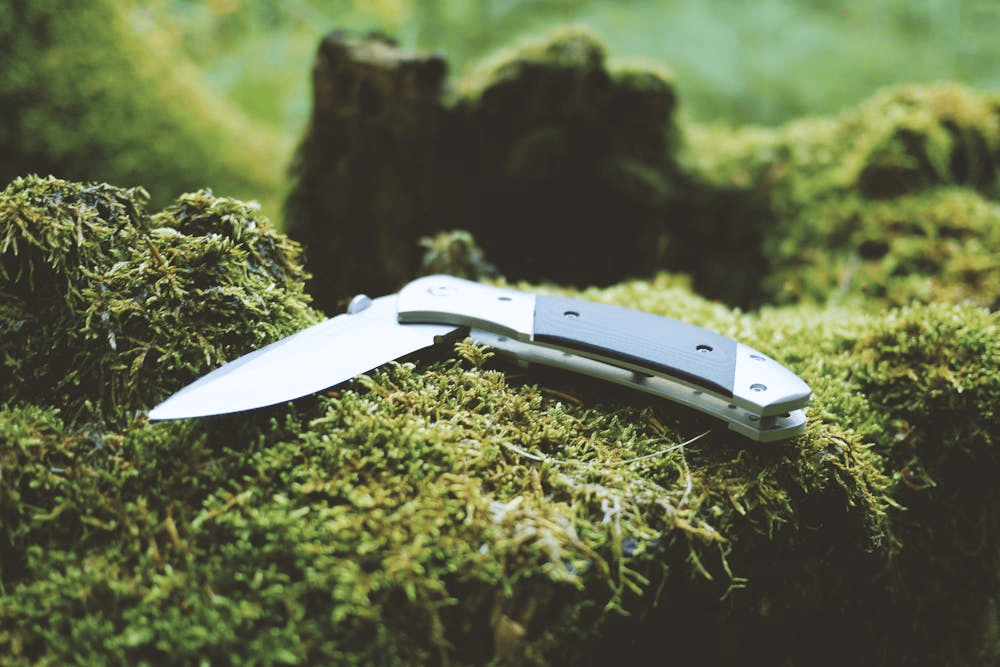When energy is stored in the mainspring, by winding, the train wheels begin to turn. This energy is carried from the barrel through the center, third and fourth wheels to the escape wheel, turning the escape wheel in the direction of the arrow shown in Fig. 1.
Considering the escapement as a unit, it can be seen that the escape wheel supplies the power, whereas the pallet transfers the rotary motion of the escape wheel into a back and forth motion of the pallet. The pallet in turn imparts motion to the jewel pin (roller jewel) which causes a vibrating motion of the balance wheel.
Detailed sequence of escapement actions
As the balance wheel swings, the jewel pin is carried back and forth across the center line of the escape wheel, pallet and balance wheel. Line AB in Fig. 2A.
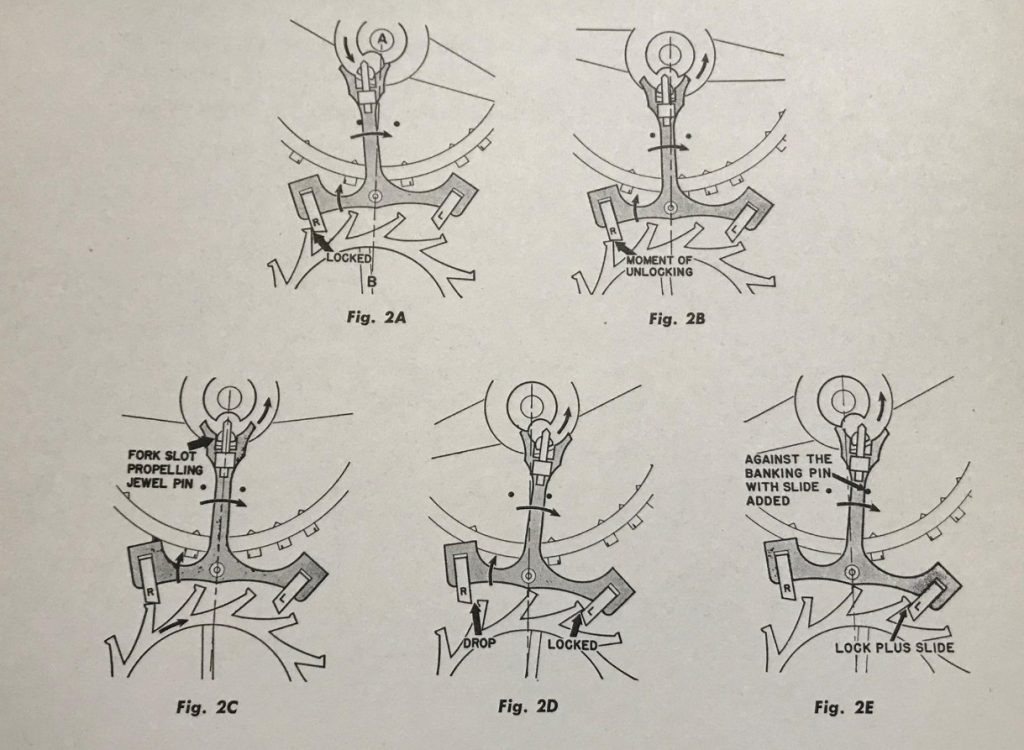
As the jewel pin approaches the center line and when in the position shown in Fig.2A, it enters and strikes the inside wall of the fork slot. During the passage of the jewel pin over the center line, the fork is moved in the direction of the arrow (fig.2B), causing the R pallet stone to unlock an escape wheel tooth.
At the instant of unlocking, the escape wheel tooth is released, which creates an impulse on the R pallet stone. This impulse forces the pallet stone out of the path of the tooth. (Fig.2C) The impulse begins at the instant of unlocking. Instead of the jewel pin driving the fork, as was the case in the unlocking period, the fork imparts a propelling force against the jewel pin. This impulse action supplies the energy to maintain the balance wheel in motion. After the escape wheel tooth slides off the pallet stone, it travels a short distance, known as drop, until another tooth locks on the opposite pallet stone. (Fig.2D)
The pallet is caused to move slightly father than the locking point because of the draw. Draw may be described as a force which tends to hold the pallet against the banking pin. It is the result of the force exerted by the escape wheel tooth on the locking face of the pallet stone. The amount of additional movement of the stone on the tooth is called slide. (Fig 2E.) The balance wheel turns until the energy stored in it from the impulse is overcome by the tension in the hairspring, pivot friction and air resistance. This entire sequence of movements will be repeated when the balance wheel and jewel pin under the influence of the hairspring return to the fork slot. Each time the jewel pin enters the fork slot, one vibration of the balance wheel has been completed. Two vibrations of the balance constitute one oscillation.
In the Bulova movement, the escape wheel rotates 10 revolutions per minute or 600 revolutions per hour. Since the escape wheel has 15 teeth, it is obvious that 15 X 600 or 9000 escape wheel teeth will deliver 9000 X 2 or 18000 impulses to the balance wheel. Since each impulse causes one vibration of the balance wheel and there are 18000 impulses in a one hour period, the balance wheel will vibrate 18000 times an hour, 300 times per minute, or 5 times per second. Because of this, the power of the mainspring is arrested and released every 1/5 second by the locking and unlocking action of a pallet stone an escape wheel tooth.
